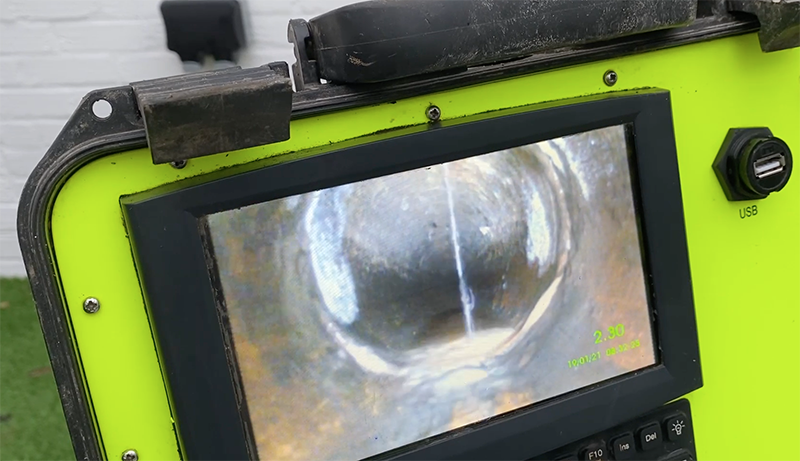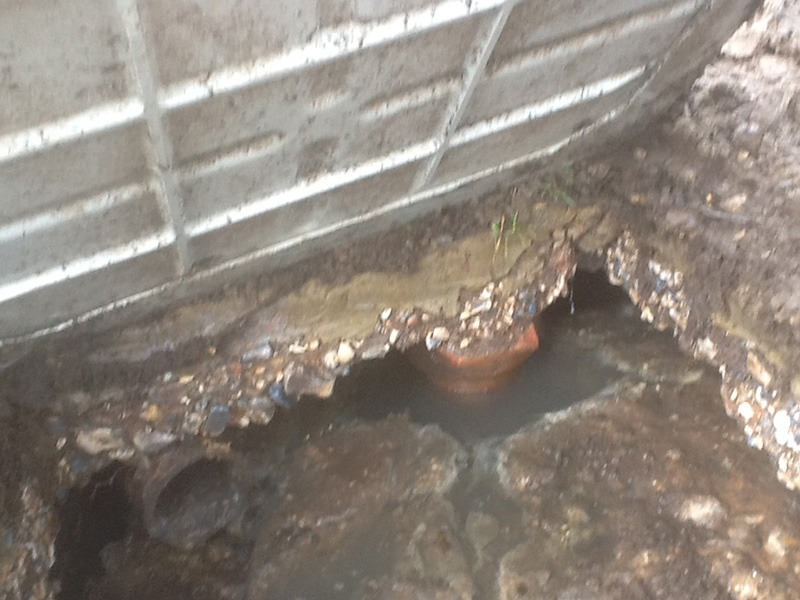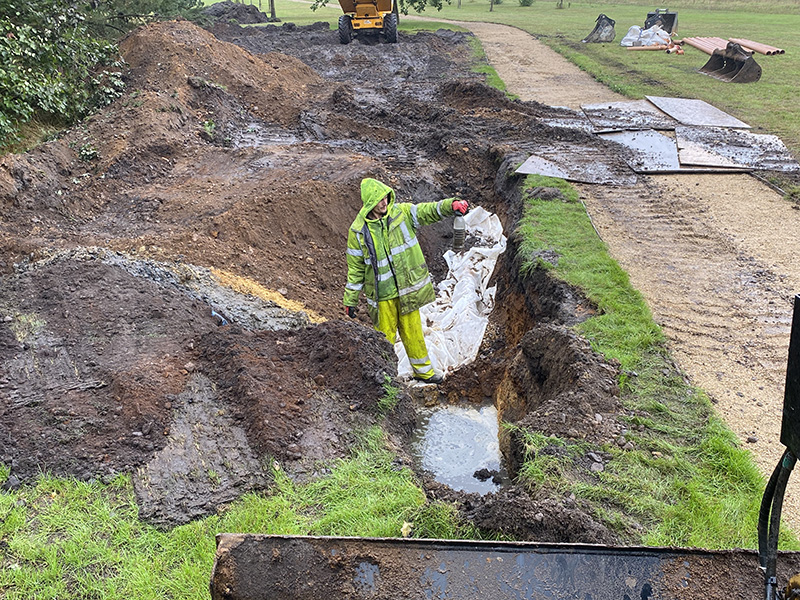Case Study | How long will my soakaway last?
When drains are attracting roots and surface water – A case in point
Observations

As promised, we have carried out the CCTV drain survey. The CCTV survey revealed damaged drains; tree roots have lifted the pipe, causing open joints, allowing ingress of surface water, and fine fibrous roots. The pipe in question is from the house and leads to the pit in the garden.
Open joints enable surface water to enter the sewage system. Surface water is mixing with sewage water and discharging the now contaminated wastewater above ground at the end of the garden – including into your neighbouring property – sewage water is seeping continually into, and ponding in your neighbours drive, especially during a downpour of rain.
See a separate report and video recordings from the camera survey.
The previous owner's Insurance company may cover this.
You will need a separate report when claiming.
Your Insurance company; may view the damage that happened during the previous owner's occupancy.
Advisement
Surface water system
We recommend a detailed survey, including a written plan or diagram for the properties surface water system.
The pit in the garden: 700 X 1800, 1250 deep is, in our opinion, too small and insufficient for a four-bedroom property.
The discharge is without a permit, based on our findings. It discharges to a large soakaway – A type customarily used for surface rainwater, not sewage. The soakaway or a pit requires a permit, although it's not likely that one will be granted.
Surface water and rainwater that is getting through open joints and the gully designed to attract surface water need removing from the sewage system.
Drainage pipe from the kitchen gully, which flows under the building, needs structural lining or replacing, up to the new system to be installed in the area of the old pit. See CCTV surveys report and charges for the lining
The pit in the garden does not meet the binding rules.
Further Observations

Further to your request, we returned to the above address on Monday, the 18th of August 2021, carried out test holes to determine the ground make-up and to establish if the private sewage system is suitable and if it meets binding rules.
The results of the test hole revealed that the ground is made up of thick clay, concluding the ground is unsuitable for a septic tank drainage field (land drains).
Please find below some information regarding septic tank systems which we hope you will find helpful:-
A septic tank comes in two parts, a chamber which would separate the unwelcome fats and the solids; the separated but untreated water ideally discharges slowly into light aerated soil, where treatment (which we call secondary treatment) occurs.
Discharges into this type of clay ground are not permitted as the ground is non-porous and deprived of oxygen.
Heavy clay soils are not permeable; a deep soak away can be soaked for long periods, particularly during the wet season. Any sewerage or separated sewerage (not treated) into clay ground will turn black like oil.
During rainfall, the now contaminated water washes toward lower ground or ditches into watercourses, leading to streams and rivers. In short, this is a direct source of pollution.
How long does soak away last from a septic tank?

We call our soakaways for wastewater ‘drainage fields’ or ‘land drainage’. We refer to a soakaway when we are dealing with surface water drainage. A carefully designed ‘soak away’ (drainage fields or land drainage), in the correct ground with the right size septic tank – preferably a little larger than needed after thorough testing – will last 12 to 20 years. I have known them to work for 30 years.
At the other end of the spectrum
- If the septic tank is too small;
- If the septic tank is not emptied regularly to keep the space for separation (indicated by the price for emptying being too low);
- If grease, fat and oil are allowed into the septic tank;
- If water from the roof or the surface water or both are allowed into the sewage system (increasing the flow tenfold);
the soakaway, drainage field or land drains will only last around six months to a year.
And if the ground is not suitable, it will never work and will be problematic for the system's lifetime, as long as the householder keeps pouring money into fixing the results rather than fixing the causes. Replacing the drainage field does not solve the problem for the long term and we see these problems over and over again.
Please do call us if you need advice about your sewage system whether it’s a septic tank, treatment plant or pumping station.
You can test whether surface water is getting into your system through ill-fitted manhole covers yourself by flooding dyed water over the manhole and seeing if it is getting into the tank.
For a full surface water drainage survey please call 0800 181 684 today.
If you can prove that no surface water from your property enters the public sewer system because you have a soakaway and watertight manhole covers you could be entitled to a ‘surface water drainage rebate’ as mentioned on the Ofwat website here: https://www.ofwat.gov.uk/households/your-water-bill/surfacewaterdrainage/

